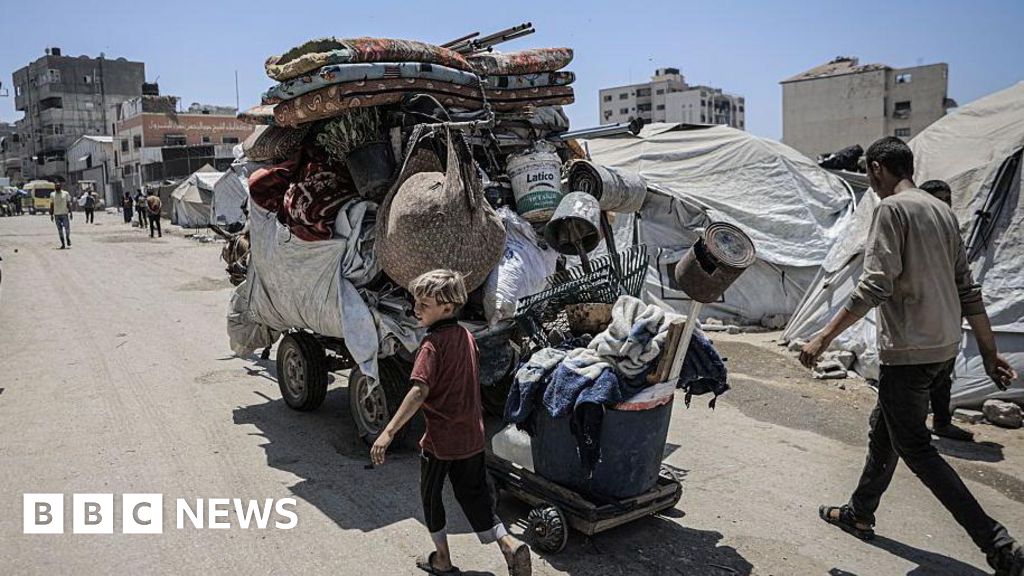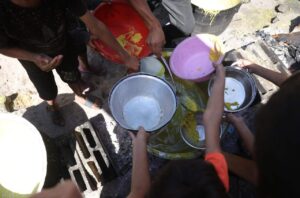
Israel has issued evacuation orders for parts of northern Gaza as President Donald Trump calls for a ceasefire deal. The evacuations come amid intensified Israeli military operations, which have resulted in significant casualties, including the deaths of three children in a strike on al-Mawasi, a designated “safe zone.”
According to the Hamas-run health ministry, at least 86 people were killed in Israeli attacks in the 24 hours leading up to midday on Sunday. Residents in neighborhoods across Gaza City and Jabalia have been instructed to move south towards al-Mawasi as military actions “intensify and expand westward.”
Escalating Conflict and Calls for Ceasefire
The call for evacuations coincides with President Trump’s efforts to broker a ceasefire. On Saturday, Trump announced on Truth Social that Israeli Prime Minister Benjamin Netanyahu was negotiating a deal with Hamas. Despite these diplomatic efforts, Israeli military operations continue in northern Gaza, with IDF spokesman Avichay Adraee stating that the objective is to “eliminate terrorists and terrorist infrastructure.”
Military bombardments have increased, with medics and residents reporting the destruction of several houses in the early hours of Sunday. The civil defense agency in Gaza, under Hamas control, reported at least 23 fatalities on Sunday alone.
Tragic Losses in Designated Safe Zones
Among the casualties were five members of the Maarouf family, including three children, who were killed in an Israeli airstrike on a tent housing displaced individuals in al-Mawasi near Khan Younis. The family had relocated to the “safe zone” a month prior, following Israeli directives to evacuate there.
“They bombed us while we were sleeping on the ground,” said Iman Abu Maarouf, the children’s mother. “We didn’t do anything wrong. My children were killed, and the rest are in intensive care.”
The IDF, when questioned about the incident, stated it could not provide a specific response without further information but emphasized its adherence to international law and efforts to mitigate civilian harm.
International Mediation Efforts
As the conflict escalates, mediators are intensifying efforts to end the hostilities and secure the release of hostages held by Hamas. A senior Hamas official indicated to the BBC that negotiations with Israel remain stalled, despite increased mediation efforts.
Qatari mediators have expressed hope that US pressure could facilitate a deal, especially following a recent truce between Israel and Iran. On Sunday, Netanyahu addressed Israel’s domestic intelligence agency, Shin Bet, highlighting the potential for “broad regional opportunities” following a victory over Iran and the need to resolve the Gaza situation.
“Of course, we will also need to resolve the issue of Gaza, to defeat Hamas, but I believe we will achieve both missions,” Netanyahu stated.
Historical Context and Humanitarian Concerns
Historically, ceasefires in the region have been fragile. In March, a two-month ceasefire collapsed after Israel launched strikes on Gaza, aiming to pressure Hamas into releasing hostages. Concurrently, Israel imposed a total blockade on humanitarian aid to Gaza, which was partially eased after 11 weeks due to international pressure.
The creation of the Gaza Humanitarian Foundation (GHF), a US and Israeli-backed aid group, followed accusations against Hamas of misappropriating aid. However, the GHF’s operations have faced criticism from UN agencies, with incidents of violence reported near aid distribution sites.
Juliette Touma, UNRWA’s communications director, described the GHF system as “a killing field,” emphasizing the need for aid distribution through established humanitarian organizations.
Despite acknowledging casualties near aid sites, GHF’s Johnnie Moore contested claims attributing all deaths to proximity to GHF operations, calling them “not true.”
Looking Ahead
As the situation in Gaza remains volatile, the international community continues to watch closely. The potential for a ceasefire remains uncertain, with diplomatic efforts ongoing. The humanitarian situation is dire, and the need for a sustainable solution is more pressing than ever.
With President Trump’s optimism for a ceasefire agreement in the coming week, all eyes are on the diplomatic channels to see if a breakthrough can be achieved, bringing much-needed relief to the region’s beleaguered population.







